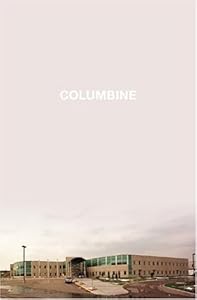

As “Weird Al” Yankovic said, “Everything you know is wrong”. Admittedly, he wasn’t talking about Columbine — that’d be a little bit of a downer. He got that from the Firesign Theatre, though they weren’t talking about that either; a school shooting is ill-suited for a comedy record.
Though they weren’t talking about anything that depressing — the statement holds when Columbine is concerned. Just about all of the accepted wisdom about what happened on April 20, 1999 isn’t right at all. Klebold and Harris weren’t targeting jocks, bullies, black people, Christians, or just about anything other than Humans. They weren’t bullied themselves — they WERE bullies. They hadn’t gone in for a school shooting — they were originally going to blow the school up. They didn’t do it on Hitler’s birthday for a reason — it was originally going to be the day before, and they even had the question of whether or not to do the attack before prom instead. While there was a Trench Coat Mafia, they’d basically disbanded the year before and the shooters weren’t a member of the group — who didn’t do anything other than wear trench coats anyway. Cassie Bernall didn’t say “Yes” — she wasn’t given the chance.
Dave Cullen‘s book, Columbine is a book-length exploration of what really did happen that day, what lead up to it, and the aftermath. Cullen was one of the original reporters — and admitted to getting things wrong himself back then. This book is an attempt to fix those errors. Cullen’s done amazing amounts of research — which he’s put online at his website. The best parts is when Agent Dwayne Fuselier of the FBI, one of the foremost forensic psychologists in the country (and father of a then-Columbine student) analyzes the killers’ diaries, videos and writings and builds a good case as to why it happened.
Most of the book is structured with an alternating-chapter setup, between the lead-up to the shootings and the long-term aftermath. In the former, Klebold comes off relatively sympathetic — he was a depressive more inclined to shoot himself instead of others left to his own devices, while Harris was a psychopath — no empathy, but really good at faking it and conning people into thinking he was normal. In the other chapters, Patrick Ireland, the boy who climbed out the library window, is the star — and a really compelling one. After being shot in the head, Cullen shows how he worked very hard to get back to normal, and restore the connections in his brain for language and movement.
Cullen takes his time and not only debunks all of the recurring myths of Columbine, but does so with great care for the survivors. As he describes the debunking of Cassie Bernall’s martyrdom, he’s sympathetic to the Bernall family who were at least able to hold on to that in hopes that their daughter’s death wasn’t in vain. Of the parents, Brian Rohrbough comes off the least sympathetic — his grief turned to anger that never seemed to abate — but then, too, he was the source of getting the local police to finally release information.
In fact, this is one of the most interesting things in the book is how badly the Jefferson County Sheriff’s Office covered up the earlier reports of Harris’ violence and threats. A year before the shootings, a warrant was written for Harris, but never acted upon due to death threats and threats of violence he’d made against neighbor and classmate Brooks Brown, which included printouts of Harris’ web page. When Columbine happened, the report was lost — both all physical and electronic copies. The report, originally due six to eight weeks after the event kept getting pushed back and pushed back. It was only until Rohrbough sued the county that the judge placed a hard deadline of May 15th of 2000, and started demanding the release of documents. While Rohrbough doesn’t come off as a particularly nice guy, he is admirable in forcing the county to do its job and his role in revealing the coverup.
Columbine is a very interesting book — particularly if you’re into the True Crime genre, or even if you’re just interested in how school shootings — and other types of crimes like this — happen. In the last chapter, Cullen makes reference to other shootings after Columbine, including the Virginia Tech massacre, which ended up being a bit different — instead of a Harris, shooter Seung-Hui Cho was closer to a Klebold — a depressive, though Cho was possibly schizophrenic, where Klebold wasn’t. Though Cho clamed the Columbine killers as an inspiration, Cullen claims Cho didn’t have the enjoyment nor the comprehension of what he was doing. The book ends with the FBI’s report on what to look for in a potential school shooter — which is perhaps the scariest, as the answer is roughly “anyone”, though there’s lots of care taken to describe what they’re typically not — total outcasts. After all, Eric Harris was a popular kid before the shooting.










